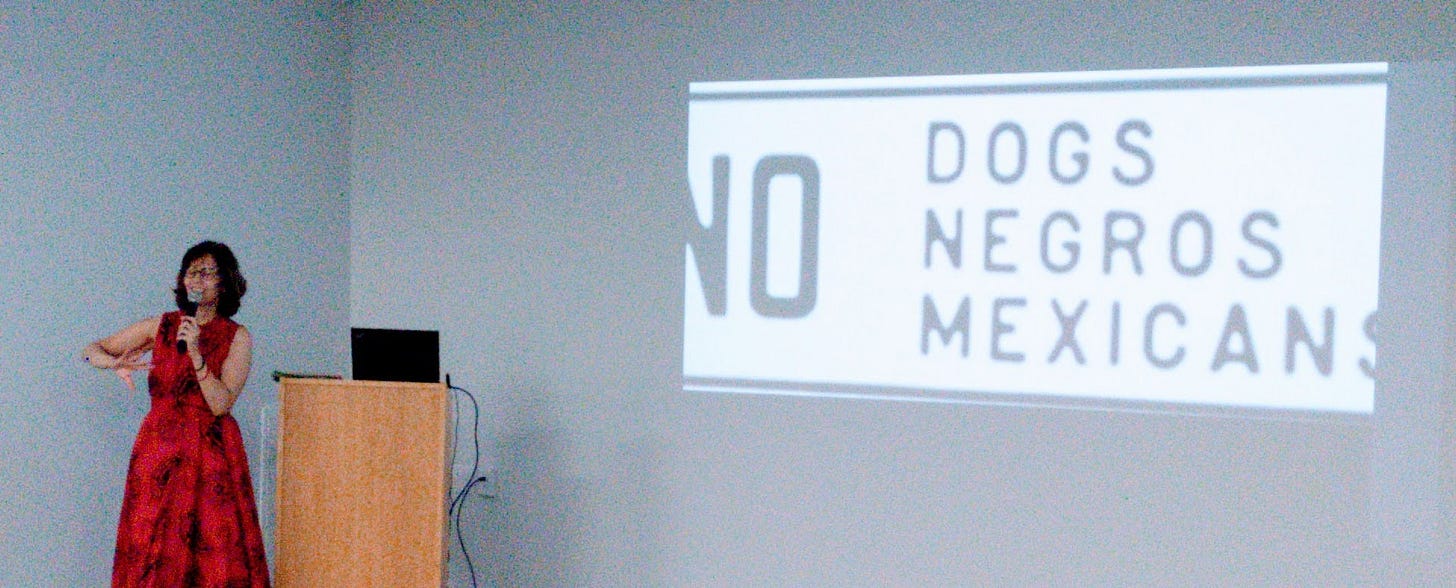
Valerie Mendoza, a historian and lecturer at Kansas City Community College, presented "Beyond Brown: Mexican Struggles for Equality Before and After Brown v. Board" on Wednesday evening in Meeting Room 1 at the Hutchinson Public Library. The program was provided through Humanities Kansas.
Mendoza focused on the parallel struggle for equal schools and educational opportunities for Latino students throughout Kansas. "All Spanish-speaking people were referred to as 'Mexican' if they had dark skin," she said. "The kids were segregated by skin color because it was assumed that they didn't speak English. They weren't assessed for English proficiency.”
"Most schools were segregated between Black and white students. Topeka had tri-racial schools,” she said.
Topeka was not the only area to segregate Latino students. "In Wichita and Chanute, for example, if there was no 'Mexican' school, the kids were sent to Catholic schools, which is another form of segregation," Mendoza said.
In Hutchinson, schools were integrated throughout the 1920s. A 1930 Hutchinson School Board record details a petition from a group of parents and business owners asking to set up a separate Mexican school in the Lincoln School District. The petitioners claimed that Latino children were a "foreign element" and "did not speak English."
The school district consulted the state school board, who ruled that the district did not have the authority to build a new school for Latinos, only for Black children. The district capitulated and built two separate rooms for the Mexican students.
Mendoza noted that Hutchinson did have segregated businesses. For example, non-white people were required to sit in movie theaters' balconies and were not allowed to sit and eat in some restaurants. Our Lady of Guadalupe Church in South Hutchinson was built as a worship and cultural center for Latinos in the area because St. Teresa’s Catholic Church’s white parishioners did not want to accept them.
This divide reemerged when St. Teresa’s Catholic School closed, and Mexican children began attending Holy Cross Catholic School. Audience member Esmeralda Tovar-Mora was a student who changed schools and recalled hearing people say they did not want her in school with their kids. “It was hard to hear that as a child,” she said. “They assumed everyone was illegal.”
The attendees noted that Hutchinson’s expansive downtown master plan does not extend into historically Latino areas south of the railroad tracks at Avenue C and Main St.
Kansas played a large role in school desegregation before the Brown v. Board Supreme Court ruling. In Kansas City, Ks., Saturnino Alvarado wanted his children to have equal education. In 1925, he and some other families were offered tuition and transportation reimbursement to send their children to a Black school in Kansas City, Mo. Alvarado refused and appealed to the Mexican Consulate. Due to threats of violence, he held his kids out of school for the entire school year. The situation was addressed by the Mexican embassy in Washington, D.C., which noted that the 1948 Treaty of Guadalupe Hidalgo terms defined Mexicans living in the United States as “white.”
In 1926, Alvarado enrolled his children in the white Argentine neighborhood school.
Local and state court cases in California carefully led to the 1954 Brown v. Board Supreme Court ruling, desegregating schools nationwide.
Audience members discussed personal experiences and Hutchinson’s Latino history and celebrations, including Cinco de Mayo each May and the Southwest Bricktown Fiesta in September.
The presentation was live-streamed on the library’s Facebook site and can be viewed here.
Hutchinson Public Library Adult Programming Coordinator Katie Broker concluded the presentation by inviting the public to continue the conversation and to make community connections.
She invited the public to author David Sebben’s discussion of his new book, “Nothing Great is Easily Won—The Solomon Butler Story.”
Hutchinson native Solomon “Sol” Butler was a phenomenal athlete who attended Hutchinson High School from his freshman through junior years. During his senior year, he followed his coach to Rock Island, Ill. Besides setting numerous track and field records, competing in the 1920 Olympic games and playing in the NFL, Butler led an adventurous and rich life.
Sebben attended Rock Island High School and connected with Butler’s story. He will discuss Butler’s extraordinary story and hold a book signing on Wednesday, July 24, at 6 p.m. in Meeting Room 1 at the Hutchinson Public Library.
For more information about the Hutchinson Public Library’s adult programs, visit the website.




